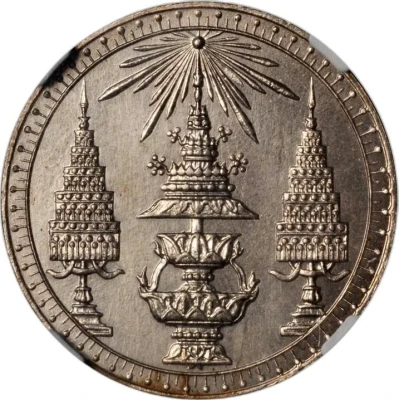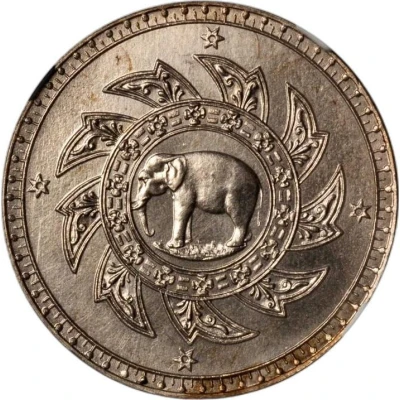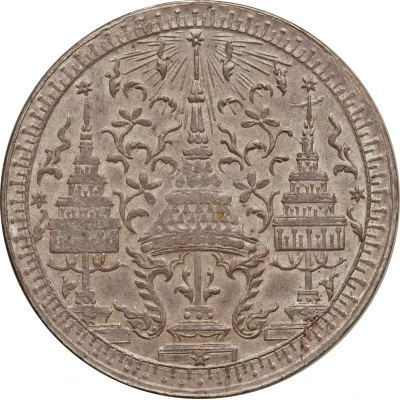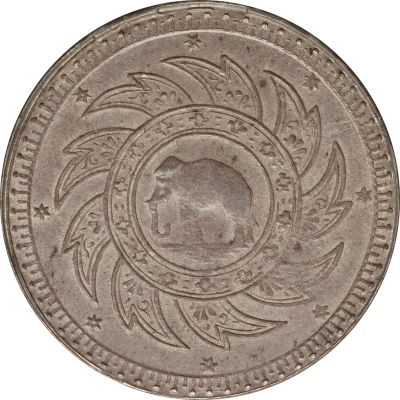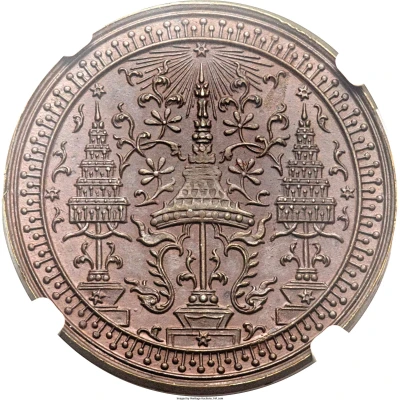
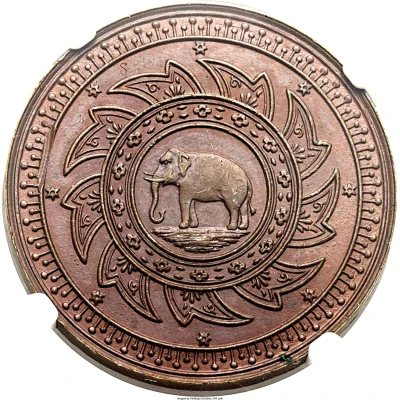

© Heritage Auctions
Baht - Rama IV Pattern ND
1860 year| Copper | - | - |
| Issuer | Thailand |
|---|---|
| King | Phra Chom Klao (Rama IV / Mongkut) (1851-1868) |
| Type | Pattern |
| Year | 1860 |
| Value | 1 Baht |
| Currency | Baht / Tical (1869-1897) |
| Composition | Copper |
| Shape | Round |
| Technique | Milled |
| Demonetized | Yes |
| Updated | 2024-10-08 |
| Numista | N#119144 |
|---|---|
| Rarity index | 94% |
Reverse
Elephant within Chakra, eight stars around. A touch softly struck in the center of the reverse
Comment
Phra Bat Somdet Phra Poramenthra Maha Mongkut Phra Chom Klao Chao Yu Hua (Thai: พระบาทสมเด็จพระปรเมนทรมหามงกุฎ พระจอมเกล้าเจ้าอยู่หัว), or Rama IV, known in English-speaking countries as King Mongkut (18 October 1804 – 1 October 1868), was the fourth monarch of Siam (Thailand) under the House of Chakri, ruling from 1851 to 1868.Outside Thailand, he is best known as the King in the 1951 musical and 1956 film The King and I, based on the 1946 film Anna and the King of Siam – in turn based on a 1944 novel by an American missionary about Anna Leonowens' years at his court, from 1862 to 1867.
During his reign, the pressure of Western expansionism was felt for the first time in Siam. Mongkut embraced Western innovations and initiated the modernization of his country, both in technology and culture—earning him the nickname "The Father of Science and Technology" in Siam.
Mongkut was also known for his appointing his brother, Prince Chutamani, as Second King, crowned in 1851 as King Pinklao. Mongkut himself assured the country that Pinklao should be respected with equal honor to himself (as King Naresuan had done with his brother Ekathotsarot in 1583). Mongkut's reign was also the time when the power of the House of Bunnag reached its zenith and became the most powerful noble family of Siam.
Interesting fact
One interesting fact about the Pattern Baht - Rama IV (Pattern) ND (1860) from Thailand made of Copper is that it features a unique blend of Thai and Western design elements. The obverse side of the coin depicts a portrait of King Rama IV in a traditional Thai style, while the reverse side features a Western-style wreath surrounding the Thai symbol for "baht," indicating the coin's denomination. This blending of styles reflects the cultural exchange and influence that occurred between Thailand and Western nations during the 19th century.
